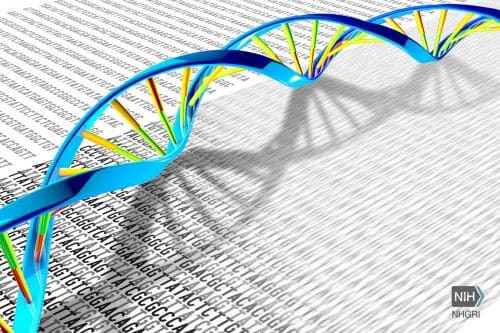A new study examines how short RNA sequences regulate the activity of long RNA sequences - and thus control the production of proteins in the cell

Although the basic code of life is kept in DNA and encodes all the proteins in our body, additional layers of code complement it and control the various aspects of the protein economy in the cell - how much protein to produce, where and when. Prof. Eran Segal And the research group led by him at the Weizmann Institute recently deciphered one of the layers of the code written in the language of RNA, which regulates, among other things, the amount of protein produced in the cell.
Prof. Segal, a member of the departments of computer science and applied mathematics and molecular biology of the cell, has been engaged in the last decade in writing the "book of rules" according to which the binding between messenger RNA molecules that carry the "recipe" for the production of proteins, to the RNA segments much shorter ones called microRNAs. Much research has been devoted in recent years to microRNA and its control activities in the cell, one of the main ones being the inhibition or turning off of messenger RNA molecules - resulting in a reduction in protein production. A microRNA molecule binds to the long messenger RNA strands in their "tail regions", called UTRs. The length of these regions is about 3-600 "letters" (the length of the text up to this point), and they may contain multiple binding sites. In the past, although scientists, including Prof. Segal, have already identified some of the central laws according to which proper binding is carried out, they have not been able to decipher all the laws governing this process.
"The difference between the research we carried out a decade ago and the research today is that then we could study about ten, or at most, twenty genetic sequences, and with the techniques we developed in the current research we can work with tens of thousands of sequences", says Prof. Segal. "This allows us to examine some crucial questions. For example, although we knew that adding 'letters' or 'words' beyond the first 14 in UTR 3 plays a role in microRNA binding, it was not clear how they are involved in the process."
"This research may have many consequences, since many diseases, including various types of cancer, involve errors in the control of the microRNA over the messenger RNA"

Ilya Slutskin, a research student in Prof. Segal's group, designed thousands of messenger RNA molecules with artificial 3 UTRs sequences - each with different mutations - so that there would not be a complete and exact match of the binding sequences to the microRNA molecules. Islands. The engineered molecules were inserted into human cells, and the researchers tested their effect on protein production. Following a discrepancy caused by a malfunction in the control mechanism, the researchers concluded that the changed letters or sequence of letters are essential for correct binding. The results were measured and quantified, so the researchers could not only ask "does it matter?", but also "how important is it?"
The experiments allowed the researchers to formulate the laws governing microRNA, and to answer several questions - which microRNA molecules act on which sequences, which "secondary" structures play a role in binding, and which microRNA molecules -Ai are the most successful in binding to the UTR "tails" 3. The research group also discovered that changing sequences in the code allows them to increase or decrease the level of suppression of protein production up to 50 times.
Based on these findings, Prof. Segal and the members of the group developed algorithms that made it possible to make predictions regarding microRNA binding. In a new series of experiments, the researchers tested the predictions, and found that based on the knowledge of the UTR 3 sequence alone, the algorithms allow the algorithms to predict with impressive accuracy the ways in which microRNAs will bind to messenger RNA strands. The results of the study Were published Recently in the scientific journal Nature Communications..
"This research may have many consequences, since many diseases, including various types of cancer, involve errors in the control of the microRNA over the messenger RNA," says Prof. Segal. "Writing a comprehensive 'rulebook' regarding the binding of microRNA to the UTR 3 regions allows us, among other things, to significantly reduce the number of mutations in these sequences, which may be relevant to the disease."
